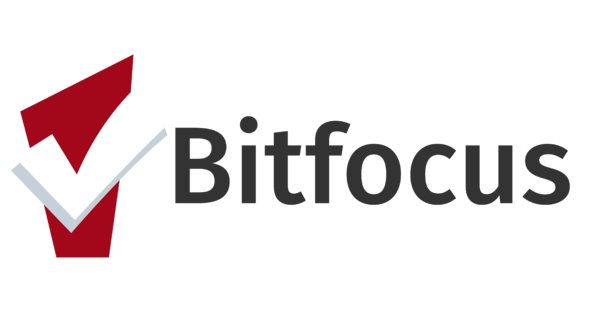HMIS & CES
KSHC FreshDesk
Need HMIS or CES help? Whether it’s access, data entry, reports, or technical issues — submit a ticket and we’ll get you back on track!
Data Requests
Submit all data requests via Freshdesk or email HMIS@kshomeless.com.
Please allow 90–120+ days for processing—approval from KHRC and the HMIS Oversight Committee is required. Complex requests may include a fee.
Clarity
Log into Clarity, the HMIS database, to enter CES assessments, manage referrals, update client information, record services, and access program reports.
HMIS & CES Overview
The Kansas Balance of State Continuum of Care uses two closely connected systems to coordinate services and collect data:
HMIS: Homeless Management Information System
HMIS is the statewide database that tracks information on individuals and families experiencing homelessness. It captures program enrollment, services provided, and outcomes across agencies. By using HMIS, our CoC can better understand the scope of homelessness, measure progress, meet HUD reporting requirements, and plan for resources that truly reflect community needs.
CES: Coordinated Entry System
CES is the process built within HMIS that ensures households are identified, assessed, and connected to housing and services in a fair and consistent way. It standardizes access across providers, prioritizes based on need, and reduces duplication so that people don’t have to start over every time they seek help. CES is not a funding stream or a program on its own—it is the way we organize and coordinate referrals through HMIS.
How to Access CES & HMIS

1. Request New User Access
-
Complete the New User Agreement & CES Participation Agreement
-
Not sure what type of access you need? No worries — submit a Freshdesk ticket and ask for a quick call to review the system and access levels
-
✅ New user accounts require approval and completion of the required trainings

2. Complete Required Trainings
-
Once your New User Agreement is submitted you’ll receive an automated email with links to the required trainings
-
The final step is a practice test in the HMIS & CES system
-
Ongoing trainings are available through our Learning Management System (LMS)
-
👥 New case managers and seasoned staff are encouraged to join the HMIS & CES End User Committee for deeper understanding, common error prevention, and live Q&A with the team

3. HMIS Program Updates?
-
Agencies starting a new program (such as a new grant), closing out a program or making changes must submit a HMIS Program Add/Close/Modify Form
- 📚 After the the form is submitted the HMIS Team will reach out to you and schedule a meeting.
- Non-HUD Funded Projects require approval from the HMIS Oversight Committee to be added to HMIS. Non-HUD Funded Agencies are encouraged to setup a meeting with the HMIS Team and Regional Coordinator to learn how they may benefit from utilizing HMIS & CES

4. Other Onboarding Support
-
User guides, policy documents, and FAQs are linked below for quick reference
-
For technical issues, submit a Freshdesk ticket
-
👥 Join the HMIS & CES End User Committee for additional training and live Q&A
Types of Access Roles

Victim Service Provider (VSP)
For domestic violence and victim service agencies that need limited access for care coordination in Coordinated Entry.
- Can: View client information needed to coordinate referrals and services through CES and participate in CES Meetings.
- Cannot: Enter or edit any data in HMIS.
- Purpose: Protect survivor data while allowing coordination in CES.

Access Point (CES Access Only)
Most common for agencies serving as Coordinated Entry Access Points within the Balance of State.
- Can: Input and update CES Assessments, participate in CES Meetings, and track CES-related client information.
- Cannot: Enter or manage data for non-CES programs or perform full HMIS data entry beyond CES requirements. Not able to run program or project level reports.
- Purpose: Allow Access Points to participate in the CES process — assess households, manage referrals, and maintain CES records — without having a program or project in HMIS.

Agency Access AND CES Access
For agencies that participate in the Coordinated Entry System and also enter/manage program data for their Continuum of Care (CoC) funded projects. (Special approval for Non-Hud Funded programs)
- Can: Complete CES Assessments and referrals and enter, view, and edit client data for the agency’s HMIS programs. Run program and project level reports.
- Purpose: Give agencies full participation in CES while also managing their own program-level HMIS data.

Agency Access AND CES Access + Outreach Map
For street outreach teams who need CES functionality and full HMIS program data entry, plus the ability to document street outreach contacts and mapping.
- Can: Complete CES Assessments and referrals, enter/manage program data, and record unsheltered outreach activities on the outreach map.
- Purpose: Equip outreach workers with the tools to track unsheltered engagement while maintaining both CES and HMIS data.
CES Resource Center
The Coordinated Entry System (CES) is the process the Kansas Balance of State Continuum of Care (KS BoS CoC) uses to connect people experiencing homelessness with the right housing and services as quickly and fairly as possible.
As the Balance of State CoC, we cover 101 counties across Kansas, organized into 9 regions. CES provides a single, coordinated access point so people don’t have to navigate multiple programs on their own. Instead of each agency keeping its own waitlist, CES uses a standardized assessment to understand each household’s needs, then prioritizes and matches them to available resources across the region.
Key parts of CES include:
-
Access Points – agencies where households can go to be assessed for services.
-
Assessment – a consistent tool to understand housing needs and barriers.
-
Prioritization – ensuring those with the highest needs or most vulnerable are served first when resources are limited.
-
Referral – connecting households to housing programs and services that best fit their situation.
CES lives inside the Homeless Management Information System (HMIS) but is a process, not a funding stream or stand-alone program. It exists to make the system more fair, transparent, and efficient, helping communities see who needs help and coordinate resources effectively across Kansas.
CES Policies & Procedures
CES Resources
HMIS Resource Center
The Homeless Management Information System (HMIS) is the statewide database the Kansas Balance of State Continuum of Care (KS BoS CoC) uses to collect, manage, and analyze data on homelessness and housing programs.
As the Balance of State CoC, we cover 101 counties across Kansas, organized into 9 regions. HMIS brings together data from agencies across these regions to create a clear picture of homelessness, measure outcomes, and guide planning. It also helps ensure we meet HUD reporting and compliance requirements, which impact funding and system performance.
HMIS allows agencies to:
-
Record client-level data, services, and outcomes.
-
Share information securely across programs to improve coordination.
-
Generate reports required by HUD and the Kansas CoC.
-
Track trends and performance to plan resources and improve services.
Our HMIS platform is Clarity Human Services by Bitfocus, a secure, HUD-compliant system. Agencies participating in HMIS follow federal data standards and CoC-specific policies to protect client privacy and maintain high-quality data.
HMIS is the data backbone of our homeless response system. By capturing accurate, timely information, it helps the KS BoS CoC allocate resources, measure progress, and advocate for housing solutions across Kansas.
HMIS Policies & Procedures
Program Forms
CoC/ESG
VA SSVF/VASH
KS BOS - 507
The Homeless Management Information System (HMIS) is the information system designated by the Kansas Balance of State Continuum of Care (KS BoS CoC) to comply with HUD’s data collection, management, and reporting standards and used to collect client-level data and data on the provision of housing and services to homeless individuals and families and persons at risk of homelessness.
The U.S. Department of Housing and Urban Development (HUD) and other planners and policymakers at the federal, state and local levels use aggregate HMIS data to obtain better information about the extent and nature of homelessness over time. Specifically, an HMIS can be used to produce an unduplicated count of homeless persons, understand patterns of service use, and measure the effectiveness of homeless programs. Through the HMIS, COC programs and clients benefit from improved internal and external coordination that guides service and systems planning. A robust HMIS also helps communities engage in informed advocacy efforts, including the pursuit of policies that result in targeted services. Analysis of information gathered through HMIS is critical to accurately calculate the size, characteristics, and needs of different subpopulations.
Additionally, use of the HMIS by agencies not funded by HUD provides benefits to both these agencies and the homeless provider community at large, including the avoidance of service duplication through the sharing of client data and program enrollments. HMIS participation also positions agencies for future funding, as many private foundations now require it.
Click here to learn more about our HMIS End User Committee.
JoCo CoC - 505
The Kansas Statewide Homeless Coalition (KSHC) has been designated as the HMIS Lead Agency by the KS-505 CoC. KS-505 CoC has entered into a contractual agreement with KSHC to provide HMIS System Administration. All operational agreements, policies, procedures, and protocols are reviewed annually by the KS-505 CoC Board in collaboration with the HMIS Oversight Committee to comply with HUD HMIS Standards and improve HMIS implementation. The KS-505 CoC Board acts on behalf of the broader CoC membership. The Board governs policies and procedures and directs the CoC more broadly. Relating to HMIS, the KS-505 CoC Board is responsible for the governance, oversight, and the HMIS Lead Agency selection/evaluation and approval of the HMIS Policies and Procedures. United Community Services of Johnson County, Inc (UCS) is the lead Planning Agency for the COC responsible for coordinating, convening, organizing, monitoring, and submitting financial applications on behalf of the CoC.
The URL for the Kansas BoS CoC’s Clarity environment is: https://ksbos.clarityhs.com/.

Office
2001 Haskell Avenue
Lawrence, KS 66046
Contact Us
- 785-764-9950
- staff@kshomeless.com
- KSHC Helpdesk (freshdesk.com)

